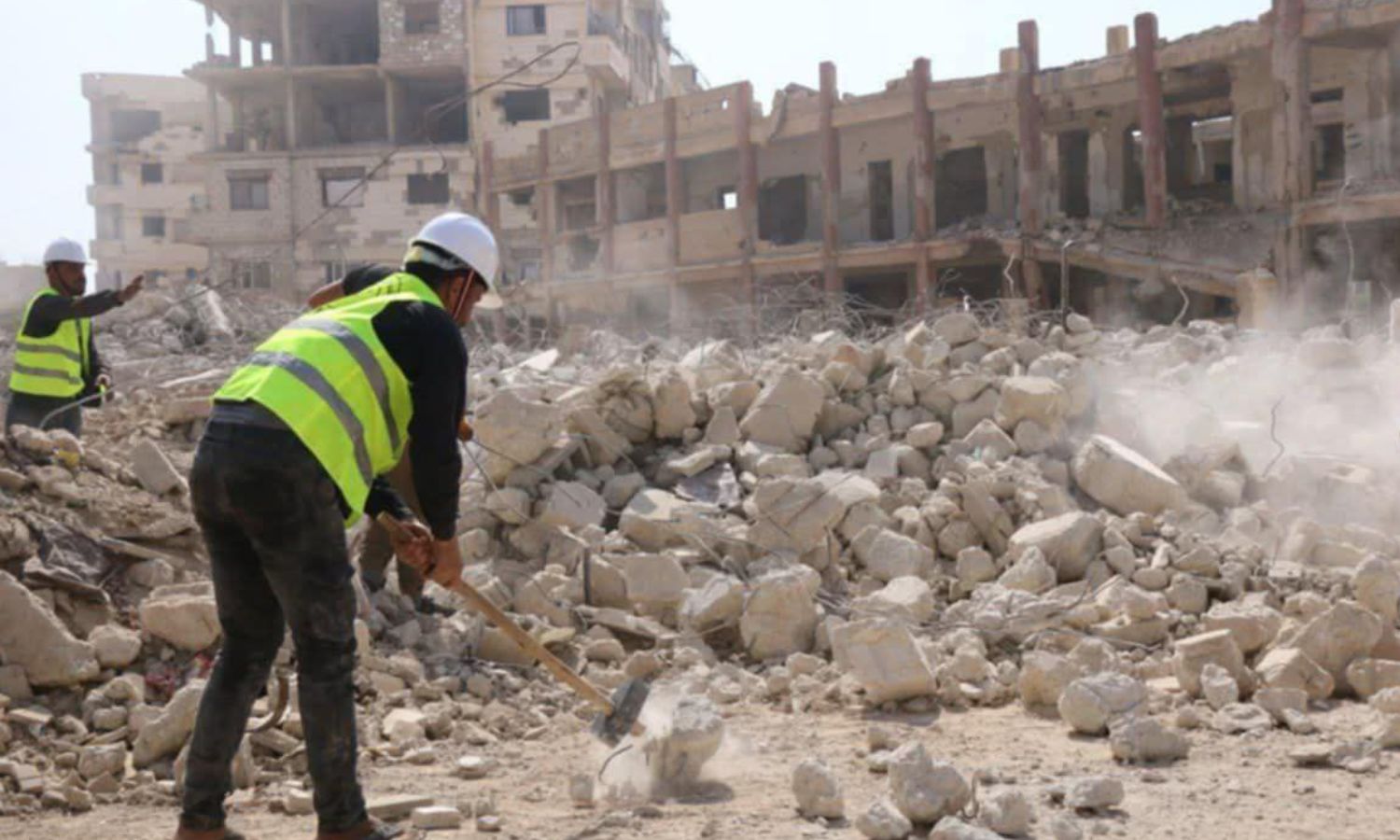
Enab Baladi – Raghad Othman
Hundreds of schools in Damascus Suburbs suffer significant damage caused by the long years of war, leaving them in a state of deterioration.
With the return of displaced persons and migrants, students’ suffering has intensified, with dozens crowded into classrooms, while schools face a shortage of teaching staff. This, according to teachers and students interviewed by Enab Baladi, requires the urgent rehabilitation of damaged schools and the overall improvement of the educational process.
At the beginning of this year, the governorate witnessed continuous efforts to restore a number of damaged schools, with eight fully renovated in recent months. Work is currently underway to repair and rehabilitate 19 more, aiming to provide a safe and stimulating educational environment for students and teachers before the school year begins.
Students’ Suffering
Like other students, Lilian (16 years old) suffers from the distance between her home in Damascus Suburbs and her school, in addition to overcrowding in classrooms, weak infrastructure such as dilapidated windows and uncomfortable desks, and the absence of green spaces and sanitary facilities.
Lilian wishes there were a school near her home to avoid the exhausting journey she currently makes, and that it would have green spaces that make her want to attend.
She also hopes that, beyond current renovation work such as repairing walls and painting, efforts will extend to improving the internal learning environment in ways that support students both psychologically and educationally.
Below Expectations
Jawdat Suleiman, principal of a secondary school in Damascus Suburbs, described the ongoing renovations as an “encouraging and necessary start” toward rebuilding the educational infrastructure but considered them still limited compared to actual needs.
He noted that sustaining these efforts requires expanding restoration to include more villages and areas in the countryside, especially with the return of large numbers of displaced people. He stressed the need to link structural renovation with human capacity development through supporting staff, curricula, and the learning environment.
Suleiman pointed out that the restoration has covered only about 13 schools, a number insufficient to meet the real needs in Damascus Suburbs. He emphasized the importance of providing a sound environment, including enough classrooms, clean sanitary facilities, modern teaching tools, and psychological and social support for both students and teachers.
He suggested several solutions, hoping they would be taken into account, such as securing sustainable funding for maintenance, involving the local community, developing teacher training programs, and providing transportation for students in remote areas.
Lina Haidar, principal of a primary school in Damascus Suburbs, agrees with Suleiman’s view. She said her school, like many others, is “unsafe and overcrowded,” pointing to the deterioration of the outer wall adjacent to the main road and the lack of adequate protection for pupils, which poses a danger to them.
She added that her school recently faced severe overcrowding, exceeding 900 students, with only 48 teachers and administrators, and a small number of janitors, which affects cleanliness and daily maintenance.
Due to poor educational conditions and the limited number of schools and classrooms, Haidar resorted to merging five classes of primary students with preparatory students, which she saw as an educational and behavioral risk due to the large age gap between the two groups.
Haidar described the restoration efforts as both urgent and positive, ensuring a safer and more attractive environment for students. She said it restores the school’s role as a place that motivates learning and builds individuals capable of bearing responsibility.
Official Plans and Efforts
Mohammad al-Hannoun, Director of the School Buildings Directorate in Damascus Suburbs, said that rehabilitating schools is a key step in restoring educational services in damaged towns and villages.
Schools are an important element in strengthening stability within communities affected by destruction and displacement, as returns to these areas have gradually begun. Their presence as service institutions helps enhance stability, ease pressure on existing schools, and provide a safe and stimulating school environment for students and teachers, he explained.
Al-Hannoun added that the number of damaged schools in Damascus Suburbs is estimated at around 230, due to extensive damage to school buildings over the past years.
He continued that school rehabilitation is supported by several international and local organizations, in cooperation with the Ministry of Education, alongside contributions from the local community, including donations from residents and local institutions in the form of labor, materials, and financial aid.
He stated that renovation projects are supervised through joint coordination between the Ministry of Education and the School Buildings Directorate, with participation from education directorates in the provinces, and on-site follow-up by engineers from the school buildings departments.
As for the challenges they face, al-Hannoun cited the lack of accurate information due to the absence of modern equipment for building assessment, a shortage of engineering staff due to many leaving government service in recent years, and the scarcity of heavy machinery, which sometimes forces them to rent private equipment, increasing the financial burden on projects.
The post Modest Efforts to Restore Damascus Suburb Schools appeared first on Enab Baladi.